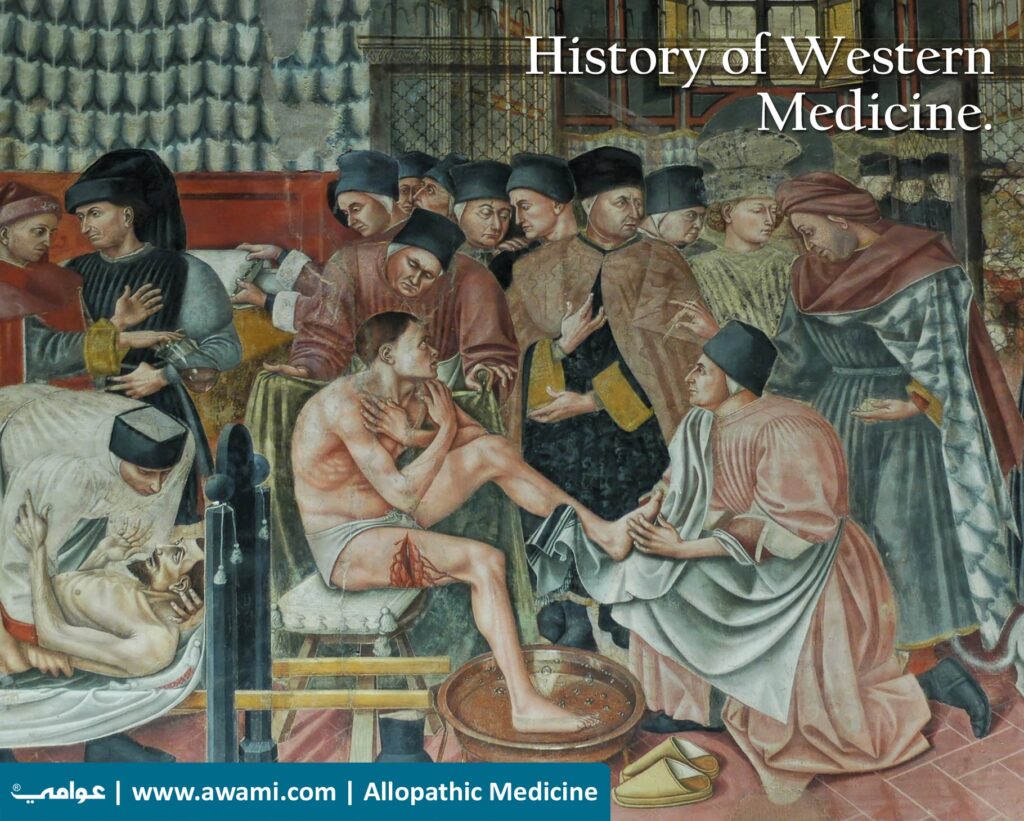
History of Pharmacy
History of Pharmacy:
The History of the Pharmacy and Pharmacology dates back to the medieval times with priests, both men and women, who ministered to the sick with religious rites as well. Many peoples of the world continue the close association of drugs, medicine, and religion or faith. Specialization first occurred early in the 9th century in the civilized world around Baghdad. It gradually spread to Europe as alchemy, eventually evolving into chemistry as physicians began to abandon beliefs that were not demonstrable in the physical world. Physicians often both prepared and prescribed medicines; individual pharmacists not only compounded prescriptions but manufactured medicaments in bulk lots for general sale. Not until well into the 19th century was the distinction between the pharmacist as a compounder of medicines and the physician as a therapist generally accepted.
PHARMACY
phar·ma·cy (fär¹me-sê) noun
plural phar·ma·cies
Abbr. phar., Phar., pharm., Pharm.
1. The art of preparing and dispensing drugs.
2. A place where drugs are sold; a drugstore. In this sense, also called apothecary.
[Middle English farmacie, a purgative, from Old French, from Medieval Latin pharmacìa, a medicine, from Greek pharmakeia, use of drugs, from pharmakon, drug.
(The American Heritage® Dictionary of the English Language, Third Edition copyright © 1992 by Houghton Mifflin Company. Electronic version licensed from InfoSoft International, Inc. All rights reserved.)
The origin of the word “pharmacy” is generally ascribed to the Greek pharmakon (“remedy”). It has been suggested that there is a connection with the egyptian term ph-ar-maki (“bestower of security”), which the god Thoth, patron of physicians, conferred as approbation on a ferryman who had managed a safe crossing. The notion of an Egyptian origin has a certain romantic appeal, but in all likelihood the word “pharmacy” and its many cognates derive, like so many other scientific terms, from the Greek.
As much as 80,000 years ago, people of the Paleolithic period were interested in the flora around them to engrave a variety of plants, bones and deer antlers. It is fruitless to try to determine when Pharmaceutical practice started because Pharmacy in a rudimentry form existed before the word.
Combining different agents, or compounding, was considered an art form practiced by Priests, and Doctors. The first known chemical processes were carried out by the artisans of Mesopotamia, Egypt, and China. Most of these craftspeople were employed in temples and palaces, making luxury goods for priests and nobles. In the temples, the priests especially had time to speculate on the origin of the changes they saw in the world about them. Their theories often involved magic, but they also developed astronomical, mathematical, and cosmological ideas, which they used in attempts to explain some of the changes that are now considered chemical
GREEK NATURAL PHILOSOPHY
The first culture to consider these ideas scientifically was that of the Greeks. From the time of Thales, about 600 BC, Greek philosophers were making logical speculations about the physical world rather than relying on myth to explain phenomena. Thales himself assumed that all matter was derived from water, which could solidify to earth or evaporate to air. His successors expanded this theory into the idea that four elements composed the world: earth, water, air, and fire. Democritus thought that these elements were composed of atoms, minute particles moving in a vacuum. Others, especially Aristotle, believed that the elements formed a continuum of mass and therefore a vacuum could not exist. The atomic idea quickly lost ground among the Greeks, but it was never entirely forgotten. When it was revived during the Renaissance, it formed the basis of modern atomic theory (see Atom and Atomic Theory).
Today modern pharmacist deals with complex pharmaceutical remedies far different from the elixirs, spirits, and powders described in the Pharmacopeia of London (1618) and the Pharmacopeia of Paris (1639). In the U.S. today, major medicines, those regarded as having the greatest therapeutic value, are selected for inclusion in the Pharmacopeia of the United States, first published in 1820, by a Committee on Revision on which all colleges of medicine and pharmacy, all state medical and pharmaceutical associations, and the U.S. surgeon general are represented. After the drugs have been chosen, the standards for quality and potency are formulated by pharmacists and pharmaceutical chemists. Similar criteria for drugs regarded by the committee as having less therapeutic value are set forth in the National Formulary, published by the American Pharmaceutical Association (founded 1852) since 1888. Any significant variation from pharmacopeia and formulary standards may be prosecuted by the Food and Drug Administration under the Pure Food and Drug Acts.
Pharmacy, science of compounding and dispensing medication; also, an establishment used for such purposes. Modern pharmaceutical practice includes the dispensing, identification, selection, and analysis of DRUGS. Pharmacy began to develop as a profession separate from medicine in the 18th cent., and in 1821 the first U.S. school of pharmacy was established in Philadelphia.
Pharmacology (fär´me-kòl¹e-jê), study of the changes produced in living animals by DRUGS, chemical substances used to treat and diagnose disease. It is closely related to other scientific disciplines, particularly BIOCHEMISTRY and PHYSIOLOGY. Areas of pharmacologic research include mechanisms of drug action, the use of drugs in treating disease, and drug-induced side effects.
Pharmacy, practice of compounding and dispensing drugs; also the place where such medicinal products are prepared. Pharmacy is an area of materia medica, that branch of medical science concerning the sources, nature, properties, and preparation of drugs. Pharmacists share with the chemical and medical profession responsibility for discovering new drugs and synthesizing organic compounds of therapeutic value. In addition, the community pharmacist, or druggist, is increasingly called upon to give advice in matters of health and hygiene.
Education and Practice
In the U.S., colleges of pharmacy offer 5-year undergraduate programs leading to the degree of bachelor of science in the pharmaceutical sciences. All accept students directly from high school and may grant advanced standing to college students or graduates. Licenses are granted by states after the following requirements have been met: graduation from one of the 72 colleges with programs accredited by the American Council on Pharmaceutical Education; about 1500 hours of internship under a registered pharmacist; satisfactory completion of a state examination. Pharmacists may practice their profession in a pharmacy located in a hospital, nursing home, or special area of a drugstore. They may also be employed by a pharmaceutical company in scientific research or the development and production of new pharmaceutical products.
WHAT HAPPENED TO THE NEIGHBORHOOD COMPOUNDING PHARMACY?
THE INDUSTRIAL REVOLUTION
The rapid change from hand methods to machine methods of production that characterized the Industrial Revolution found a ready application in pharmacy, especially under the impact of the scientific developments of the nineteenth century. Phytochemistry and synthetic chemistry created new derivatives of old drugs and new chemical entities of medicinal value that strained
the capacity of the individual pharmacy. Large scale drug manufacturing had its strong hold on society with the advent of machines and patents.
The progress made by this new industry is demonstrated by the catalogue of the American firm G.D. Searle, which by the late 1880s listed 400 fluid extracts, 150 elixirs, 100 syrups, 75 powdered extracts, and 25 tinctures and other drug forms.
THE DECLINING ART OF THE APOTHECARY
Industrialization had an impact on every aspect of the activity of the pharmacist. First, it led to the creation of new drugs, drugs that the individual pharmacists own resources could not produce. Second, many drugs that the individual pharmacist was able to produce could be manufactured more economically, and in superior quality, by industry. Third, industry assumed responsibility traditionally vested in the pharmacist for the quality of the medication. The plethora of proprietary medicines, widely and often blatantly advertised, deprived the pharmacist of a market for private specialties; it forced the pharmacist to become a vendor of questionable merchandise; it opened the way to much broader competition from merchants, grocers and pitchmen than the pharmacist had previously encountered.
THE COMMUNITY PHARMACY
The nineteenth century did not see the end of the art of compounding, but the art did give way, however grudgingly, to new technology. It has been estimated that a “broad knowledge of compounding” was still essential for 80 percent f the prescriptions dispensed in the 1920s.
Although pharmacists increasingly relied on chemicals purchased from the manufacturer to make up prescriptions, there still remained much to be done secundum Artem. They spread their own plasters, prepared pills (of aloes and myrrh or quinine and opium, for example), prepared powders of all kinds, and made up confections, conserves, medicated waters, and perfumes. They put up tinctures (of laudanum, paregoric, and colchicum) in five gallon demijohns. And they frequently combined into a single dosage from several medicines, which normally today would be written and dispensed as separate prescriptions. Further more, they were often called upon to provide first aid and medicines for such common ailments as burns, frostbite, colic, flesh wounds, poisoning, constipation, and diarrhea.
In addition to maintaining a prescription laboratory, pharmacists usually carried the disliked but necessary patent and proprietary remedies along with herbs and locally popular nostrums of their own compounding.
THE TWENTIETH CENTURY PHARMACIST
The most notable change in pharmacy in modern times has been the virtual disappearance of the preparation and compounding of medicines. Whereas in the 1920s, 80 percent of the prescriptions filled in American pharmacies required a knowledge of compounding, by the 1940s the number of prescriptions requiring compounding had declined to 26 percent. As far back as 1971, only 1 percent, or less, of all prescriptions combined two or more active ingredients. Moreover, the pharmacists commitment to maintaining the quality of the drugs dispensed has been reduced to knowing such facts as the length of shelf life and the effect of exposure to light and judging the reliability and reputations of the manufacture. All this meant that the pharmacists education and activities had to undergo change. At the same time that the scientific education of pharmacists was steadily becoming more demanding, their role in the provision of health care was becoming more and more circumscribed. Moreover, they were increasingly subject to government and institutional requirements that diminished the importance of the patient-pharmacist relation. And, especially in the United States and Great Britain, competition from prescription departments in chain and department stores tended to demean both the role and the dignity of the pharmacist as a health-care professional. The urban blight that attacked the neighborhoods was inevitably a threat to the friendly neighborhood pharmacist.
The reaction to these conditions was apparent in the drop in the production of graduates of American schools of pharmacy who were planning to go into the field of community pharmacy. In 1947, about 90 percent of graduates planned to go into some aspect of community pharmacy; in 1973, that figure had dropped to 76.6 percent; in 1988 it stood at 57.1 percent.
COMPOUNDING TODAY
Custom Compounding pharmacies are on the rise. Physicians, medical institutions and patients are realizing more then ever the importance of tailoring an individuals medications to specifically meet there needs. A majority of the Pharmacists that are going back to compounding are doing so for the love of the science and interest in the patients well being. Being able to be in the role of a problem solver opens the doors to creativity and genius that the medical industry has been eagerly adopting for the last decade.

 by
by